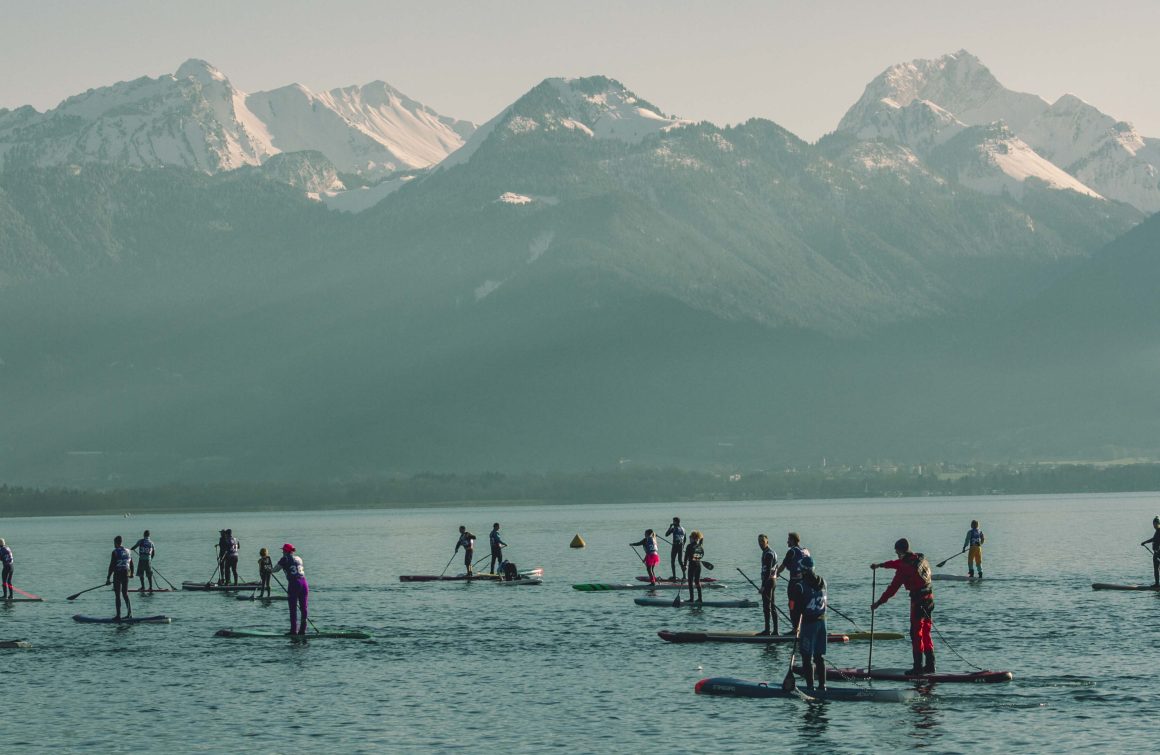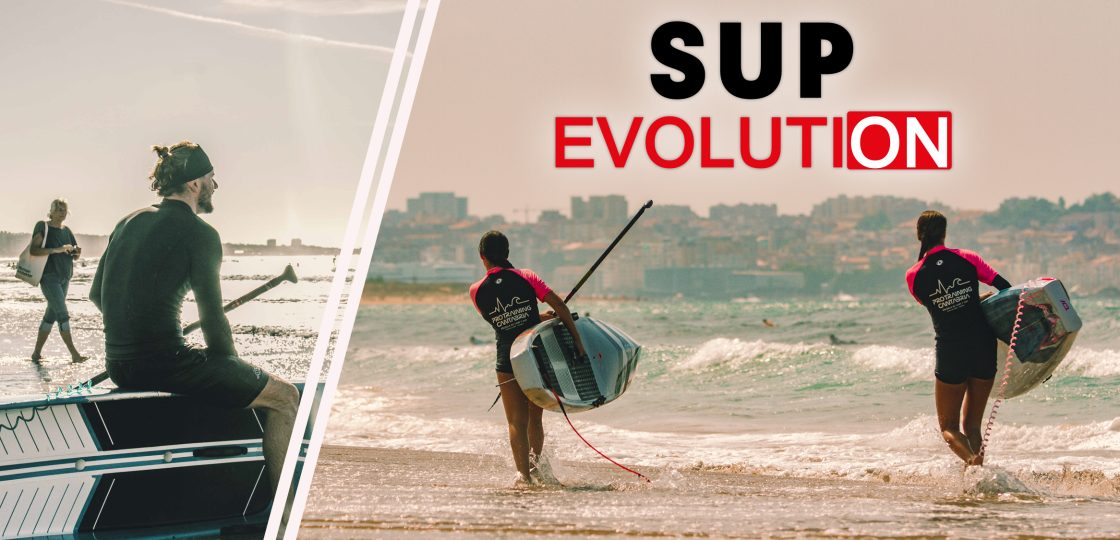In this SUP Evolution article, we give you basic concepts to choose your Stand Up Paddle route and the myths of this sport.
It is very important to know the minimum concepts of meteorology to avoid having an unnecessary scare on our board. Where should I paddle today? Is it safe to leave at this time? Do I know the place? There are a thousand questions that we must consider before putting our board to float.
BEACH SITUATION
It is highly recommended to know where our beach is oriented. If you are a beginner, the best thing to do is look for quiet bays, deltas, estuaries, etc. FLAT AND UNCHANGED WATER IS OUR FRIEND
Today we are going to talk about the wind in a mundane way:
WIND SPEED
We are addicted to calm in the beginning … but … IT SOUNDS TO CHINESE WHAT IT PUTS IN THE weather forecast!!!
We are going to put similes with our daily lives to try to be clear about the concepts.
- Winds between 0 to 6 knots (0 to 12km/h): The sea is calm or very little ripple. You practically don’t notice the breeze. Very safe practice
- Winds between 7 to 12 knots (12km/h to 22km / h): In the sea, you can already see some white solitaire on the horizon. You feel the breeze much more from the shore and there are some waves on the shore. If we paddle the wind in favour we will go very fast but, going back will be quite hard.
- Winds from 12 knots: With initiation material, it is quite laborious to advance to the wind. It is advisable to look for a sheltered place such as a jetty, port or area covered by the wind. If not, it will not be a totally fun session in your first days or months of practice.

WIND DIRECTION
It is very important to know where the wind comes from. This makes a drift effect on our board, that is, it pushes us where it blows. Have you ever seen a beach umbrella or a Nivea ball fly away? Well…
We are not going to put cardinal points to the wind since, as we have spoken before, each beach will have a situation. Some will face south, others north, etc. We will talk about what will happen in general terms with the different directions of it.
- Wind ON SHORE: It is the wind that comes from the sea to the land. It is the safest to practice since, in an emergency, it will bring us to the coast without any complications. Bad conditions, it usually brings some waves on most beaches…
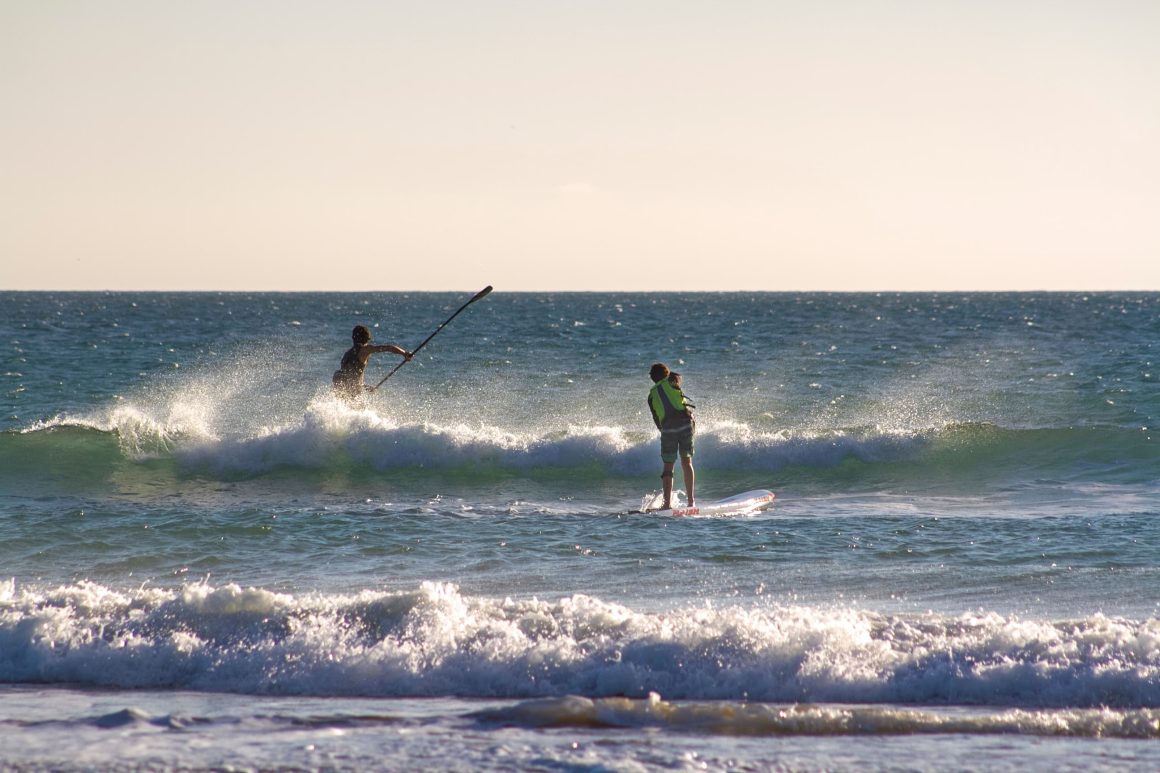
- Wind SIDE SHORE: It is the lateral wind, that is, looking at the sea, we will notice one side or the other of the face. These winds usually leave the waters calm, even so, it depends on each beach. The most important thing is that, if we enter the water paddling in the wind, the return will be hard. It is highly recommended with side winds to start the session against the wind so that when we are tired, the return is a walk of roses.
- WIND OFF SHORE: Terrestrial winds, that is, they blow from land to sea. It is undoubtedly the most dangerous wind since, before a failure, we will drift offshore. It is also the most deceptive. Upon reaching the beach we will see the calm sea and it could seem like a perfect session until we see the problem on the spot.
In all these directions we can put their diagonals, that is, SIDE ON, SIDE OFF. The best thing is to know our beaches to know which winds are the most recommended. If not, it is best to ask local people who can recommend us.
PADDLE SURF MYTHS
You can learn alone:
Everything is relative. You are going to enter the sea, which is not turkey mucus, but remember, THE SEA IS NOT TO BE AFRAID, BUT YOU ALWAYS HAVE TO BE RESPECTFUL.
Do you know where the wind comes from? The currents? What to do if you lose the paddle? There are many variations that we have to take into account, not just stand up and row.
IT IS VERY RECOMMENDED to take an introductory course in a school to learn the basics of sport and have a point of reference to go to for advice, buy or practice.
It is very boring:
Yes and no. Is it boring to swim or run? Well, everything is relative! Is it comparable to running on the longest avenue in your city seeing only asphalt to running through the center of Paris?
SUP, like any sport, has many variables. It is highly recommended to do it accompanied but without a doubt, what makes Paddlesurf unique is to be able to practice it in unimaginable areas. Did you know that there are races in the alps ?, descents of rivers ?, routes through emblematic cities? That is not boring for anyone!
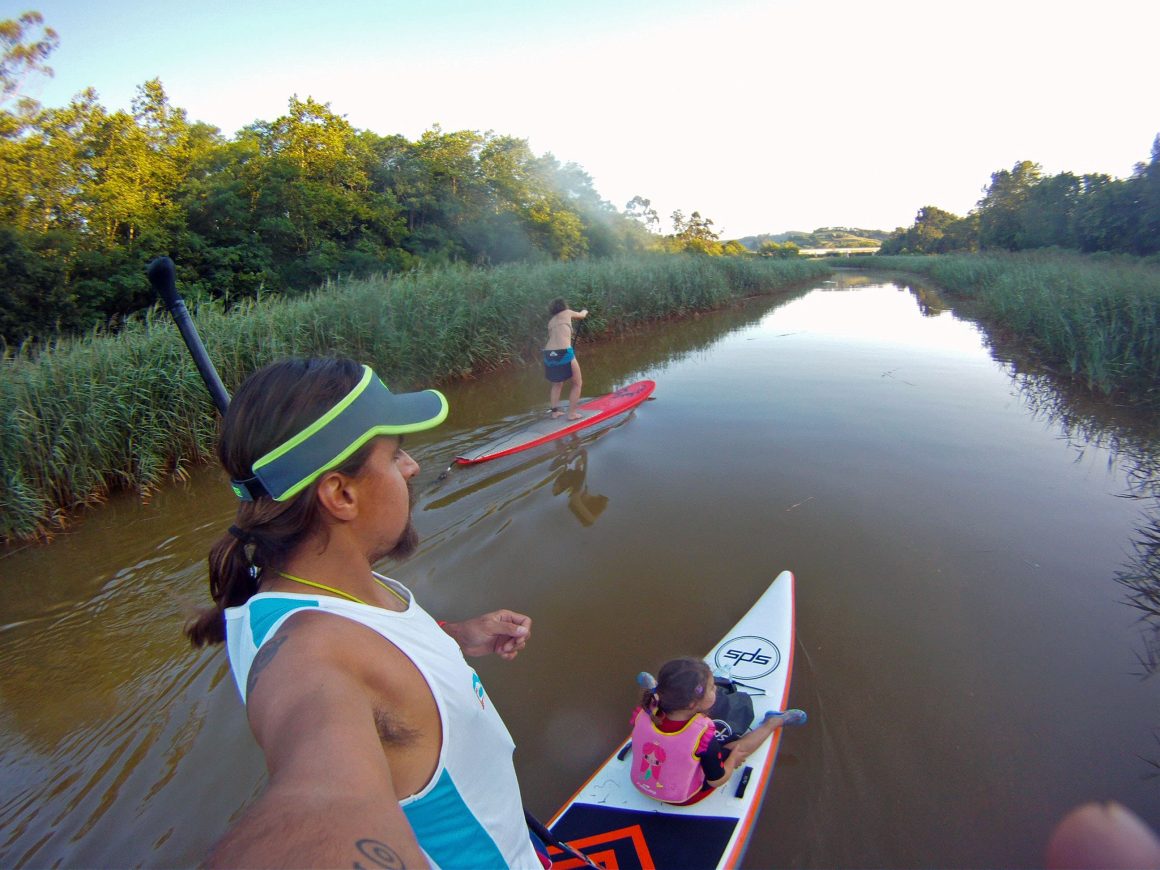
Balance is difficult:
Maybe yes or no … Schools have different types of tables. The bigger they are, the more balance you usually have. We go back to the importance of learning in a specific center in order to enjoy a variety of table models.
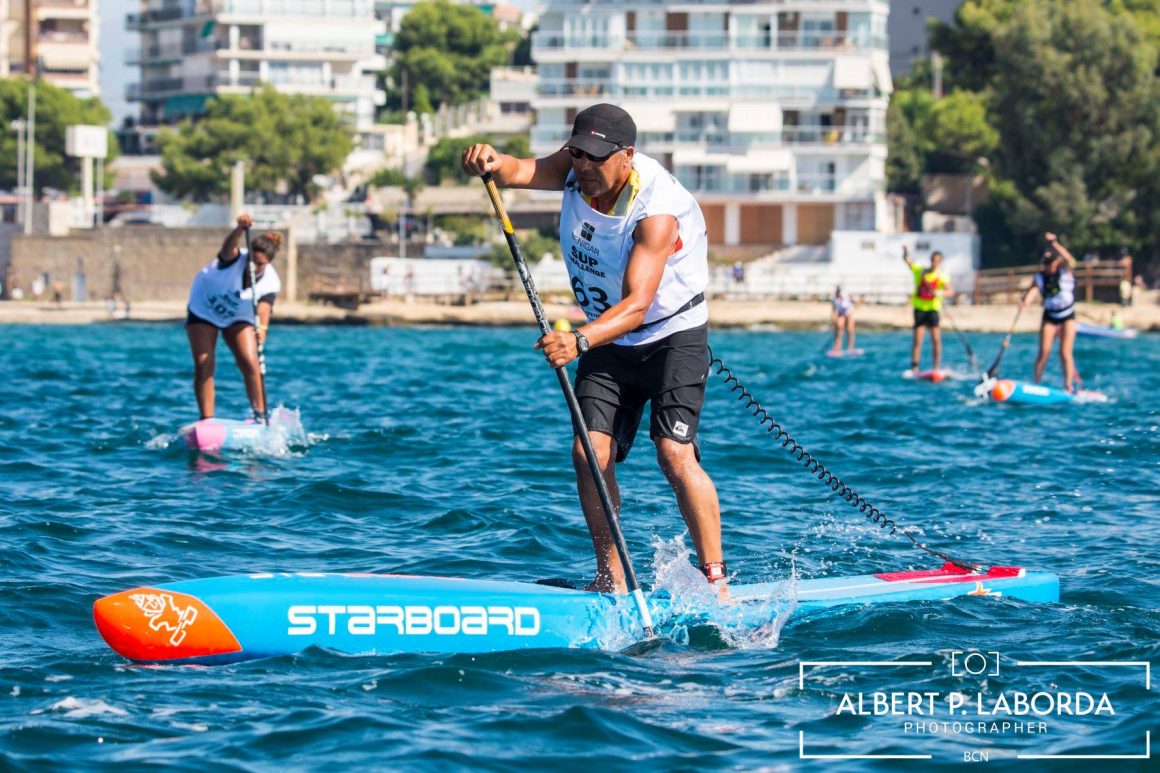
IN GENERAL, ANYONE IN LESS THAN AN HOUR IS ENJOYING THIS SPORT WITHOUT A PROBLEM
You have to have the strength to practice it:
No way! The oars are carbon and weigh about 450 grams … like a couple of apples.
If the conditions are optimal, moving forward is very very simple. Think that summer schools have practitioners from 5 years old.
Is it only for young people?
On the contrary! Possibly this sport has many more practitioners than what we call “imserSUP” than you expect … It is a sport for all audiences. It has the adrenaline that you want to put in, relaxation, waves … thousand options!
It is an expensive sport:
There are many ways to get started. Schools have rental or partner options ranging from less than € 5… not even a gym fee costs so little
Cold:
The best example is the mountain … is it cold in the snow? Clear!!! But, when you are equipped you have nothing, right?
In the sea we have wetsuits. What makes Paddlesurf special? That you really are not in contact with the water unless you fall … In sports such as surfing, windsurfing, etc. the contact is more continuous. But to give you an idea, athletes generally go out to train in the middle of winter in swimming trunks or leggings.
